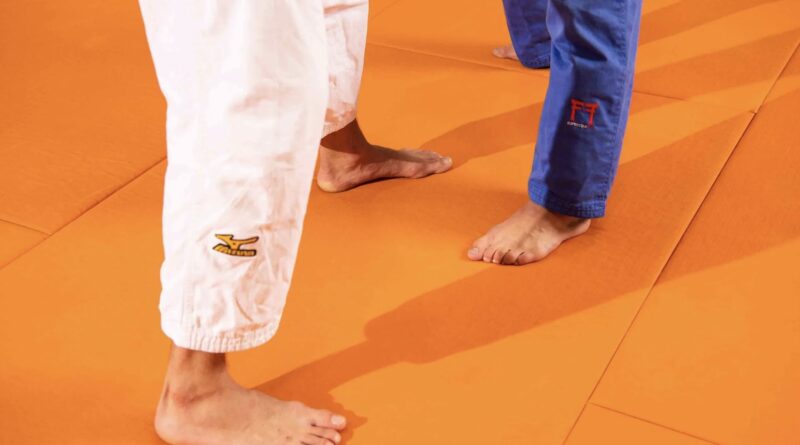Effects of judo-specific intermittent training on lower-limb impulse and specific performance in judokas
Ho P, Yeh H, Li F, Ho C, Yang C, Kuo Y, Hsu C, Ho C. 2025. Effects of judo-specific intermittent training on lower-limb impulse and specific performance in judokas. PeerJ 13:e19491

ABSTRACT
Intermittent training (IT) has been shown to enhance athletic performance by improving aerobic and anaerobic capacities, neuromuscular efficiency, and recovery key factors for judokas given the intermittent nature of judo combat. This study investigated the effects of a six-week judo-specific intermittent training program on body composition (body mass (BM); percent body fat (PBF); skeletal muscle mass (SMM)), grip strength, lower-limb impulse (countermovement jump, (CMJ)) (relative force peak (RFP)), relative force peak (RFP), reactive strength index-modified (RSImod), jump height (JH), time to takeoff (TTT)), and specialized performance (special judo fitness test, (SJFT)) (SJFT series A, SJFT series B, SJFT series C, SJFT total number of throws, SJFT post-exercise heart rate, SJFT one-minute post-exercise heart rate), with two primary objectives: (1) incorporating uchikomi + ippon seoi-nage (Tori group) as part of the training intervention and (2) examining the impact of serving as sparring partners through mae-ukemi (Uke group) on performance outcomes. Thirty male judo athletes (all black belt) were randomly assigned to the Tori (169.90 ± 6.17 cm in stature, 76.67 ± 18.2 kg in mass, 20.64 ± 3.07 years of age and 13.10 ± 2.88 years of experience), Uke (72.36 ± 6.32 cm in stature, 77.28 ± 19.4 kg in mass, 21.73 ± 6.15 years of age and 11.90 ± 1.79 years of experience), and control group (CON) (167.18 ± 4.16 cm in stature, 76.77 ± 13.7 kg in mass, 21.55 ± 5.30 years of age, and 12.00 ± 2.40 years of experience) (n = 10 per group). The intermittent training sessions were held twice weekly (Tuesday and Thursday) at 2:00 PM, with a 24-hour recovery between sessions. Participants were paired by body weight (≤10% difference). Training included two blocks of six 20-second sets, with 20-second passive rest intervals, totaling 8 minutes per session. The results showed a significant time effect (p < 0.01) in the special judo fitness index, along with a time × group interaction (F = 5.44; p = 0.01; η2 = 0.28). Post hoc comparisons revealed that the Tori group’s improvement was significantly greater than that of the other two groups (Tori: p < 0.01; Uke: p = 0.58; CON: p = 0.78). For CMJ parameters (RFP, JH, RSImod), although a significant time effect was observed, no interaction effects were found for any parameter. In terms of body composition and grip strength, neither a time effect nor an interaction effect was present. Additionally, the Uke group, while serving as sparring partners, had no negative impact on any variables examined in this study. Judo-specific intermittent training can significantly enhance SJFT, making it an effective training method. While CMJ parameters showed a time effect, intermittent training alone may not fully improve lower-limb impulse. Additionally, during sport-specific intermittent training, serving as a sparring partner does not negatively impact performance, allowing safe integration into training programs.
Download the full article HERE.

